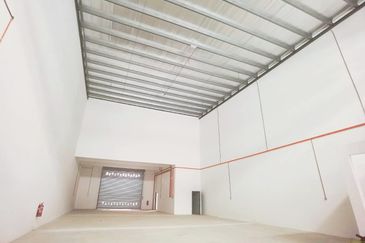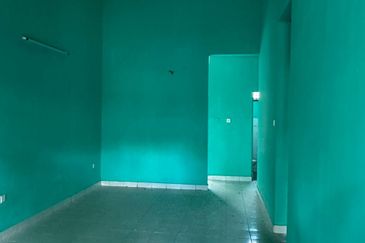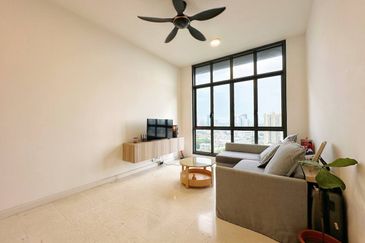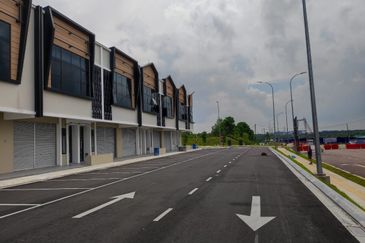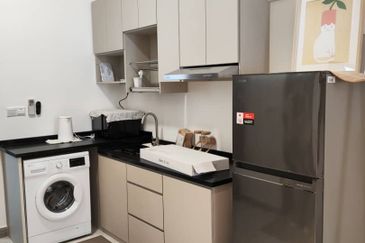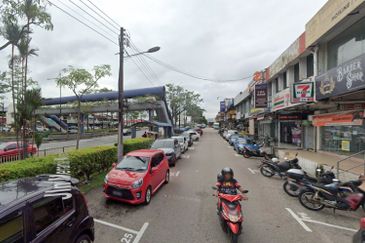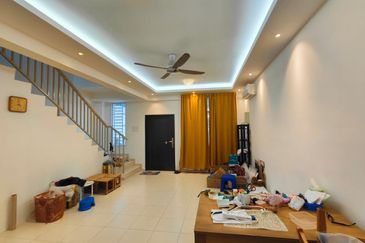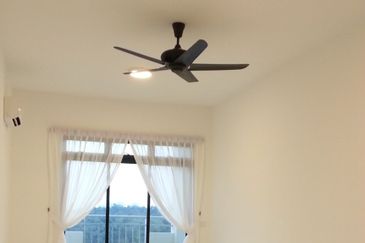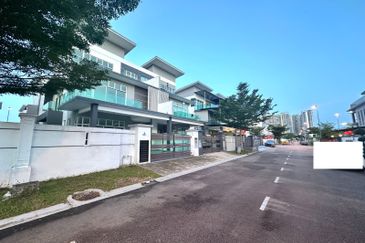LIM Ming Yan, CEO of CapitaLand, and other top executives at the group were in a jolly mood during a Chinese New Year lunch at the China Club on Feb 19. The main topic of conversation was the potential of Iskandar Malaysia for Singapore property developers.
Later that same afternoon, Lim was in Iskandar Malaysia, sealing a deal in the presence of the prime ministers of Singapore and Malaysia to acquire and develop land on A2 Island, a man-made island in Danga Bay, Johor. CapitaLand and its partners will pay some RM811 million ($324 million) for 71.4 acres of land on A2 Island. That works out to about $103.50 psf. The plan is to develop high-rise and landed residential properties, retail space, serviced residences, a marina hub with restaurants and perhaps some offices. The development could also feature a ferry service to and from Singapore, according to officials at CapitaLand.
CapitaLand will own 51% of the development, while its partners Iskandar Waterfront Sdn Bhd (IWSB) and Temasek Holdings will hold 40% and 9%, respectively. IWSB is a company controlled by Malaysian entrepreneur Lim Kang Hoo.
CapitaLand is the first major Singapore developer to take on a large-scale integrated project in Iskandar Malaysia. Last October, Ascendas and UEM Land said they would jointly develop a $1.5 billion tech park in Nusajaya.
Spanning an area three times the size of Singapore, Iskandar Malaysia is said to be one solution to the city-state's shortage of land. Besides its close proximity and relatively low land cost, warming ties between the governments of Singapore and Malaysia are helping to spur confidence and interest in the growth area.
Heavyweight Singapore developers like CapitaLand could well be among the early beneficiaries of this trend. Not only do they have the capital to take on large-scale projects in Iskandar Malaysia, they are also well placed to sell the developments to homebuyers and investors in Singapore. They could also manage these projects out of their home base in Singapore. Indeed, that is what CapitaLand intends to do.
"Our own perspective is that the Malaysian and Singapore economies complement each other," Lim says at CapitaLand's results briefing on Feb 21. "We can have complementary arrangements with Malaysia, especially in Iskandar. Operationally and organisationally… we can leverage our operating HQ and CapitaLand Singapore to carry out the projects. This is where the synergy is."
In a sense, developers like CapitaLand might lead the way for other Singapore enterprises to eventually expand and relocate to Iskandar Malaysia. "We see the Malaysian business as an extension of our Singapore business," Lim says. "It is 10km from the Johor Causeway, 28km from Senai Airport and half an hour's drive to the Tuas Second Link," he adds, referring to A2 Island.
On the flipside, getting developers like CapitaLand involved in Iskandar Malaysia might raise the bar for other developers. CapitaLand is Southeast Asia's largest developer. Through its 65%-owned subsidiary CapitaMalls Asia, CapitaLand is also Asia's largest mall developer and owner. The CapitaLand group has also proved adept at using funds and real estate investment trusts (REITs) to spur its growth. All in, it has 16 funds and six REITs, with total assets under management of $37.1 billion.
Standard Chartered notes that CapitaLand has a particular advantage when it comes to integrated developments, its most famous being Raffles City in Singapore and Raffles City Shanghai. "Investors see large, integrated developments as one of CapitaLand's key competitive advantages, and we expect CapitaLand to undertake more such projects where they can create substantial value," it says in a recent report. The Danga Bay development is one such development, and the Chao Tian Men project in Chongqing is another example, the report adds.
CapitaLand will take the lead in creating the masterplan for A2 Island. According to officials at the group, the project has an estimated total gross floor area of 11 million sq ft, and is expected to be developed in phases over a period of 10 to 12 years. The project is expected to generate a total gross development value of approximately RM8.1 billion. According to Lim, the project will be largely residential, but the shopping mall will be a central feature, along with the serviced residences and a marina hub. "I would say it's perfect for us to look at some of these developments, where our shopping mall can take the central location and our residential can take the adjacent plot," Lim says.
Shifting strategy
CapitaLand's project in Iskandar Malaysia comes amid a streamlining of its businesses. Since being appointed CEO in January this year, Lim has narrowed the group's focus to four main categories: Singapore (with Malaysia), China, CMA and The Ascott Ltd. He also wants to see the group's operating profit after tax and minority interests (Patmi) as well as operating return on equity (ROE) rise over time. "We are not happy with where we are today and we think we should be able to improve that over the next few years," he says. CapitaLand's ROE in 2012 was 6.7%.
Achieving this involves managing the balance of the group's various businesses. For instance, residential property development can be very profitable, but they take years to build. Moreover, under accounting rules, in China, earnings can only be recognised when homebuyers get their keys. On the other hand, shopping malls deliver value through rising net property income (NPI), which in turn yields revaluation gains. As these assets mature, CapitaLand often shunts them into REITs and funds, which then enables the group to reapply the capital to new developments that help drive its ROE.
The residential property business in Singapore has been under pressure recently because of the government's efforts to curtail speculation and dampen demand. Lim figures that the high-end residential market is likely to be more affected than the mass-market sector, and has been steering CapitaLand towards the "first-time buyer" segment. "For Singapore residential, we aspire to do 8% to 10% of market share. But we won't do this at all costs. We will be rational in our approach and in acquiring land," Lim says. This year, CapitaLand plans to launch the remaining 542 units of D'Leedon, 292 units of Interlace, 359 units of Sky Habitat, and 120 units at Marine Point and 700 units at Bishan Street 14.
Meanwhile, in China, CapitaLand has some 4,000 residential units ready for launch. It also has sufficient landbank for a further 26,000 units. While China has also been trying to cool speculation in its property sector, Lim sees plenty of scope for growth. "For the last two years, we've been shifting our projects to the segment targeting first-time buyers. China is going through a phase of urbanisation and this will make up the demand for first-time homebuyers," he says. CapitaLand China's margins for its residential portfolio are in the range of 20% to 30%.
As part of its efforts to narrow its focus, CapitaLand has also been reviewing some of its non-core businesses. These include its business in Vietnam as well as ASX-listed property company Australand. Its other non-core businesses are Surbana Corp, an international consultancy and township development company; and StorHub, which provides storage facilities for individuals and companies. So far, the only non-core business CapitaLand has confirmed it will keep is its Vietnam business.
Analysts figure CapitaLand's balance sheet could be enhanced if it offloads its non-core assets. Notably, some believe it to be close to unlocking value at Australand. "General Property Trust and Mirvac have been reported to seek to put up a joint bid for Australand. We expect divestment proceeds of $1.5 billion, based on the current price of $3.46 per share for Australand," notes Standard Chartered.
Ample capital for Iskandar
Will Malaysia be a major feature of CapitaLand's future plans as it refocuses its businesses? How large a bet is it making on Iskandar Malaysia? Can its stock climb higher?
CapitaLand certainly isn't short of capital to fund its plans in Iskandar Malaysia. Its share of the gross development value at A2 Island amounts to 4.3% of its asset size of $37.8 billion as at Dec 31. Its share of the initial cost of the project of $165.2 million can be easily funded internally. "At the corporate level, we have $3.3 billion of cash. We still have ample amounts of cash for our commitments," says Arthur Lang, chief financial officer of CapitaLand.
Wong Yew Kiang, an analyst at CLSA, figures that the group actually got a relatively good deal on the land. "We view the pricing of the joint-venture site at RM261 psf favourably," he says in a report. "[It is] a 31% discount to Chinese developer Country Garden Holdings' acquisition price of RM376 psf in Danga Bay just two months ago." The Danga Bay project could give CapitaLand margins of 15% and add three to four cents per share to revalued net asset value (RNAV).
Meanwhile, CEO Lim says CapitaLand is no stranger to Malaysia. While CapitaLand was only formed in 2000, through the merger of DBS Land and Pidemco Land, its units have been involved in Malaysia since the 1990s, Lim says. "We did some mezzanine financing for a residential project in Kuala Lumpur. The Marc Residence in KLCC was developed by CapitaLand," he adds.
For 2012, CapitaLand reported a 12% decline in earnings to $930 million, which was slightly above consensus profit forecasts. Standard Chartered is forecasting a 24.7% rise in earnings to $1.16 billion for this year and a further 11.7% rise to $1.32 billion for 2014. It puts CapitaLand's RNAV at $4.92 per share. Standard Chartered has an "outperform" rating on the stock, with a price target of $4.50.
"As we now expect CapitaLand management to pick up pace in its China residential business, increase cost efficiency and undertake more integrated and redevelopment projects, we set our price target at 0.5 times standard deviation above the historical price-to-RNAV ratio. Our price target is set at 0.91 times RNAV," Standard Chartered states.
Shares in CapitaLand have risen 76% in the last 12 months.
This story first appeared in The Edge Singapore weekly edition of Feb 25-Mar03, 2013.
TOP PICKS BY EDGEPROP

TriTower Residence @ Johor Bahru Sentral
Johor Bahru, Johor
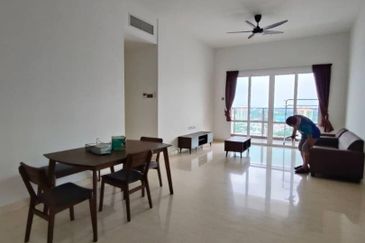
TriTower Residence @ Johor Bahru Sentral
Johor Bahru, Johor
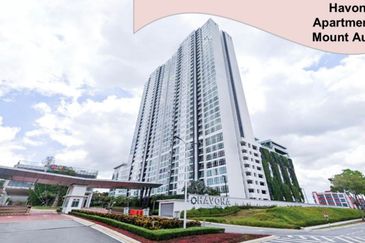
Havona Residence @ Taman Mount Austin
Johor Bahru, Johor

Havona Residence @ Taman Mount Austin
Johor Bahru, Johor
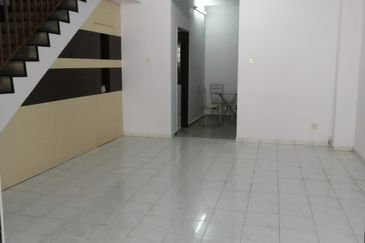
Taman Bukit Indah @ Iskandar Puteri
Johor Bahru, Johor
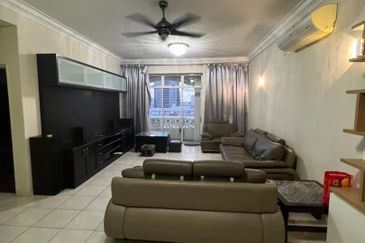
Pangsapuri Orchid View Luxury Apartment
Johor Bahru, Johor

